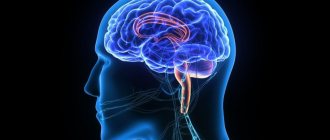In psychology, negativism means a person’s resistance to any external influence, devoid of rational premises, even contrary to his own well-being.
In a more general sense, this concept denotes a generally negative perception of the world around us, the desire to do everything contrary to requests and expectations.
In pedagogy, the term “negativism” is applied to children who are characterized by an oppositional manner of behavior with people who should be an authority for them (teachers, parents).
Active and passive form of resistance
It is customary to distinguish two main forms of negativism: active and passive.
Passive negativism is expressed in absolute ignorance of demands and requests. In the active form, a person shows aggression and sharply resists any attempts to influence him. As one of the subtypes of active negativism, we can distinguish paradoxical, when a person does everything intentionally the opposite, even if it is at odds with his real desires.
Separately, there are purely physiological manifestations of this condition, when a person refuses to eat, practically does not move, and does not speak.
Signs of negativism
Let's see how this phenomenon manifests itself. By noticing similar signs in yourself or in the behavior of another, it will be easier to understand who you are dealing with.
- Stubbornness, rudeness, isolation.
- Demonstrative ignoring of another.
- Reflections on the injustice of fate.
- Thoughts about the imperfection of the world.
Negativism in an adult
- Envy of another person's success.
- Ingratitude. Everyone should.
- The position of the victim. Everyone around is bad and guilty.
- Focusing on the negative.
Related concepts
Negativism is one of the trio of manifestations of a child’s complex of protest behavior.
The second component is stubbornness, which can be considered a form of negativism, with the only amendment that stubbornness in any matter has its own specific reasons, while negativism is resistance that is not motivated by anything. What unites these phenomena is that both arise on the basis of purely subjective human sensations.
One of the closest phenomena to negativism (as a psychiatric term) is mutism. This is a condition in which a person avoids all communication, both through speech and gestures. But, unlike negativism, mutism is mainly the result of a strong shock.
The third component is obstinacy, the difference from stubbornness is that it is not directed at a specific person, but in general at the educational system, the development of events, and so on.
Characteristics and properties
Negativism was originally described as a characteristic of mental illness.
As psychology developed, negativism came to be seen as:
- character anomaly, expressed in stubbornness, rejection of any offers of help;
- protest reaction;
- hostile-aggressive reaction;
- personality type.
The contribution of negativism to personal development is ambiguous. Russian psychologist A.V. Brushlinsky believes that children's and adolescent negativism provides temporary protection from excessive help from adults and peers, promoting independence.
K.N. Polivanova considers negativism as a form of tentative actions. The lack of testing deprives the child of the opportunity to transform abilities into “working” ones and makes it difficult to build behavior.
However, the most important characteristic of negativism is irreparable harm to the personality, which causes deformation changes due to the dominance of negativism in the personal structure. One of the properties of negativism is dependence on upbringing, which is associated with a lack of maternal love and a neglectful attitude towards the needs of the child.
According to the views of psychologist V.S. Mukhina, aggressive or cold parents can become role models and then identification with parents follows an alienated pattern, forming a special type of personality.
In foreign studies, the characteristics of negativism are associated with oppositional defiant personality disorder:
- cynicism;
- conflict;
- tendency to provocations;
- manifestations of vindictiveness;
- gloat.
The latter characteristic is due to an identity crisis and the contradiction between the need for autonomy and parental overcontrol. Modern psychology knows that personality development occurs through contradictions. The inability to cope with difficult situations drags the individual into new, increasingly complex problems and contradictions.
The result of their unconstructive understanding and resolution is:
- negative attitude towards the world
- distorted value and semantic attitudes;
- low self-esteem;
- dissatisfaction with oneself.
Complex of reasons and factors
As a psychiatric diagnosis, negativism is most often observed with the development of catatonic syndrome (schizophrenia, agitation and stupor), autism, dementia (including senile) and some types of depression.
When negativism is meant in a broader context, then among the reasons for its occurrence, it is customary to primarily name frustration caused by long-term and very strong dissatisfaction with life circumstances and the environment surrounding a person. In turn, this frustration creates severe psychological discomfort, to compensate for which the person resorts to negativistic behavior.
Another possible reason for resistance may be difficulties with communication in a person. In this case, such a state arises as a hypercompensatory reaction to one’s own communication problems.
In the form of violent stubbornness, negativism arises as a response to attempts at external influence that are at odds with the person’s personal needs and desires. This reaction is due to a person’s need for his own opinion, self-expression, and control over his own life.
Definition
The term "negativism" comes from the Latin "negativus", meaning negativity. The phenomenon is associated with a disorder of the will and is characterized by a tendency to refuse and act contrary to the demands, requests and desires of others. Most often, the symptom manifests itself with catatonic agitation and stupor.
During agitation, people with a movement disorder may notice an increase in mental activity, when behavior begins to manifest itself as monotony, stereotyping, meaninglessness and impulsiveness. During stupor, patients with movement disorder experience complete immobility and a weakened response to stimuli.
In a stupor, a person does not come into contact with other people and stops reacting to events; patients are most often in the same position with tense muscles, frozen in some position. Negativism can manifest itself both with catatonic excitement and stupor and can be active or passive.
Usually the phenomenon manifests itself in unmotivated resistance to any requests regarding any actions, movements, or pronouncing phrases. Over time, negativism becomes an obstacle to a person’s adaptation to the surrounding world of constant communications.
German psychiatrist Ernt Kretschmer (1888-1964) believed that negativism is closely related to hypobulicism, the lowest type of volitional attitude, which manifests itself when the target will is weakened, which is no longer capable of leading a person.
The researcher believed that hypobulic acts during times of severe mental turmoil, illness, and also in situations where a person cannot fulfill the inflated demands and expectations placed on him.
A different definition of negativism is given by the Swiss psychiatrist Eugen Bleuler (1857-1939), who attributed the following to the phenomenon of negativism:
- ambition, that is, a violation of the will, which is characterized by simultaneously arising opposite impulses (for example, to make and not to make a movement when following instructions);
- ambivalence, a contradictory attitude towards an object or an ambivalent experience caused by an individual or an object, which is distinguished by simultaneously arising contradictory feelings;
- schizophrenic splitting of the psyche, characterized by the inability to draw a conclusion from contradictory beliefs, when an inadequate impulse can easily replace an adequate one.
These signs were criticized by K.G. Jung in his work "Critique of Bleuler's theory of schizophrenic negativism", who believed that a negative reaction is determined by a strict sequence of psychological causes, pointing out Bleuler's incorrect use of the term "abvivalence".
Relationship with age
Age-related crises that characterize the transition from one life period to another are often accompanied by changes in character and thinking, and frequent mood swings.
At this time, a person becomes conflicted and even aggressive to a certain extent, and a pessimistic view of the world around him prevails. Negativism is almost always a symptom of such a crisis, which manifests itself in stressful situations, when a person is most vulnerable and defenseless.
Critical ages
Throughout life, a person experiences several age-related crises, most of which occur before the age of 20:
- newborn crisis;
- crisis of the 1st year of life;
- crisis 3 years;
- crisis 6-7 years (“school crisis”);
- adolescence crisis (from about 12 to 17 years).
In adult life, a person faces only two critical periods associated with the transition from one age to another:
- middle age crisis;
- stress associated with retirement.
Pathological resistance in children 3 years old
Naturally, negativism is not characteristic of the first two periods, but already at the age of three, when children begin to show a desire for independence, parents are faced with the first manifestations of children's stubbornness and categoricalness.
That is why this period is often called “I myself,” since this name best describes the state of a child at three years old. The child wants to perform most of the actions on his own, but his desires do not coincide with his capabilities, which leads to frustration, which, as mentioned above, is one of the main causes of this condition.
At the same time, one should not confuse negativism with simple disobedience of a child. When a baby refuses to do something he doesn't want, that's normal. Negativism manifests itself in situations when a child refuses to perform some action precisely when adults have suggested it to him.
Features of negativism in children
Negativism in children is a natural and inevitable stage of personality development. As a rule, it manifests itself in crisis periods of age. For the first time - at 2-4 years old, then - at 6-7 years old. Negativism in a child - whims, reluctance to learn, mood swings, unmotivated sadness.
According to psychologists, a distinctive feature of children's negativism is that the reasons for its appearance always lie in external circumstances. Due to the immaturity of the personality, the child is not aware of what he is doing; he is ruled by emotions and desires. Of course, the baby does not behave badly for the sake of a quarrel with mom and dad. For him, negativism becomes a way of protecting his “I”, a convenient tool for manipulation, a desire to show his true attitude to the demands of adults. [3]
Psychologists identify 2 main reasons for negative manifestations in a child’s activities:
- inconsistency in the methods of education among adults;
- inattention on the part of adults to the needs of the child. [3]
Regardless of the reasons for the emergence of negativism in a child, his “spoiled” behavior is a signal for parents. They need to analyze whether their parenting methods are effective and whether they are stingy in their expressions of love.
If negativism is not constructively overcome by middle school age, it will take on an irreversible development trend.
View from the outside
If we talk about a psychiatric term, then in this case negativism itself acts as a symptom of a certain number of diseases. Moreover, depending on the form (active or passive), it can manifest itself both in demonstrative insubordination and in passive resistance to any requests of the doctor, which is its most important feature in this case.
As for negativism from a pedagogical or general psychological point of view, the main external manifestations in this case will be speech and behavioral signs:
- difficulties with communication, interaction with others, even the closest people;
- conflict;
- refusal to compromise;
- skepticism and mistrust bordering on paranoia.
In the case of adults, negativism and nihilism should not be confused. Nihilism is a worldview position, and, despite the fact that its external manifestations are similar to those of negativism, it is a conscious choice of a person, while people with pathological stubbornness behave this way unconsciously.
How to deal with the problem
Examples of nonconformism are often found in our lives. Examples of such behavior in society can be various coups d'etat, when people who disagree with the established order try to impose their own values on society. Unlike nonconformism, negativism more often manifests itself in everyday life not related to the public. The presence of such disorders in loved ones is a good reason to contact a specialist. Only the psychological influence of an experienced doctor allows one to resolve the internal conflict, which is the root cause of pathological stubbornness.
In the case of preschool children, various mental correction methods are used, based on the format of games and fairy tales. When negativism appears in adolescence, cognitive-behavioral techniques are used. It is very important to be able to find the necessary thread that will allow you to make contact with a teenager who is isolated in his own world. In order to achieve the desired result, the child’s parents must be directly involved in the treatment. To correct behavior, you will need to use all your ingenuity, since otherwise, you may encounter an emotional barrier that the teenager will build.
It is important for parents to understand that psychological pressure exerted on a child can only lead to a worsening of the situation. Threats and physical punishment will force the child to withdraw into his own world. Experts recommend using a soft impact technique that is based on compromises. Parents should try to initiate conflicts with their children as little as possible.
The main goal of therapy is to teach the child to interact correctly with the world around him by instilling positive behavior patterns. Achieving results in changing your own behavioral model should be accompanied by praise and understanding. Positive reinforcement plays an important role for an incompletely formed psyche.
Negativism can be expressed both in the refusal to fulfill the requirements, and in the performance of actions opposite to the required
How does it feel from the inside
The feelings of the person himself are quite difficult to describe, primarily because such people rarely recognize their condition as abnormal.
The internal state will be characterized by an extreme degree of confusion in one’s own desires and needs, conflicts with oneself, and sometimes self-aggression.
The passive form in this case can be felt as inhibition of consciousness, an extreme degree of indifference towards all surrounding things and people.
Signs of psychological maturity
- Naturalness, spontaneity and liveliness of emotions. The ability to freely and respectfully express your feelings and needs. Understanding and accepting social norms and the ability to integrate with your interests.
Photo by RODNAE Productions: Pexels
- Favoring genuine and respectful behavior rather than open confrontation. Accepting yourself and people without trying to change someone.
- There is an idea about your meaning in life. And a smooth movement towards achieving this goal, which contributes to the constant improvement of one’s skills, knowledge, and professionalism.
- The desire for long-term and sincere relationships. Knowing yourself and the other in these relationships.
- Humor and lightness towards your failures. The ability not to complicate the situation, but to make fun of yourself. Caring attitude towards yourself and others.
What to do if this affects your family?
If it seems to you that one of your loved ones has signs of negativism in behavior, then, first of all, you should contact a psychologist or psychotherapist to resolve the internal problems that caused this condition, since such pathological stubbornness in itself is only a consequence , therefore, in order to overcome it, it is necessary to work with the root cause.
Among the methods of psychotherapy, play therapy, art therapy, fairy tale therapy, etc. are most suitable for preschoolers and primary schoolchildren.
For negative adolescents and adults, cognitive behavioral therapy has proven itself to be the best treatment. It is also important not to forget about your own attitude towards your loved ones. Psychotherapy will be most successful only if you work on this problem as a team.
In order to correct negativistic behavior and, if possible, avoid any conflicts, it is necessary to be creative. This is especially true for children.
It is necessary to exclude any psychological pressure on the child; in no case should there be threats or physical punishment - this will only aggravate the situation. You will have to use so-called “soft power” - negotiate, adapt, make compromises.
It is advisable to generally avoid situations in which conflict may arise.
Your main goal is to ensure that your child begins to follow positive patterns of communication and interaction with others. Don't forget to praise him every time he does something good, makes concessions, helps you, or communicates calmly with other people. In overcoming negativism, the mechanism of positive reinforcement plays a crucial role.
Recommendations from psychologists: how to become more positive
The fight against pronounced negativism is a difficult path, on which you will first have to admit to yourself the existing problem and understand the reasons for its occurrence. Think about what exactly pushes you into the abyss of pessimism - financial difficulties, failures in love, difficult relationships with your husband/wife? For the most part, the depth of existing problems depends on the exact mindset with which a person approaches their solution.
In the fight against signs of negativism, psychologists advise changing your attitude towards the world around you. The following recommendations will help:
Focus on the good
It is important to stop seeing everything in black. This is what cultivates negativism. Try to focus on the good things in your life. And if you catch yourself thinking negative thoughts, stop. Don't let them linger in your head.
Start small - in any situation that unbalances you, try to find at least one positive moment. Over time, this will become a habit, and you will no longer consider every problem hopeless.
Keep quiet if you can't say anything good
Negative people can be very rude, which turns people off. It is important to learn to conduct a “normal” dialogue with each interlocutor without sharp criticism and insults - from household members, colleagues, friends.
You won't be able to change your communication style quickly. Start with the simplest thing - if you cannot say anything good, productive or useful to your interlocutor, it is better to remain silent.
Do what you enjoy
Try keeping a diary where you can plan pleasant things to do. In your daily to-do list, leave time for hobbies and interests that are fun, calming, and relaxing. The more positive moments in your life, the better.
Give yourself room for error
Negativists perceive committed mistakes very keenly. Every problem seems like the “end of the world” to them.
Try to look at problems from a different angle. Give yourself room to make mistakes. It is important to understand that failures are natural, they strengthen and motivate.
Bottom line
Negativism is a normal development of any person who gradually becomes aware of himself, his desires and needs. It all starts at 2-3 years old and continues throughout life. Negativism can clearly manifest itself during problematic or stressful periods in life, as well as during age-related crises. The rest of the time it becomes either situational or a permanent phenomenon, which depends on the development of the individual himself.
Negativism should be treated with condescension, since it is often expressed in situations of a person’s reluctance to follow social rules or desires. However, the consequences are important. If negativism affects the freedom and desires of other people, then it becomes harmful. If negativism does not harm or infringe on anyone, then you can allow it to manifest itself.
A person does not always have to follow society. The environment offers conditions in which a person can live and exist peacefully. Submission to social rules allows everyone to live in peace and stability. However, the public does not always correspond to the personal. Much depends on how much the rights and freedom of others will be affected. It's okay to behave negatively as long as it doesn't harm anyone. Then society will condescendingly perceive the negativism of such a manifestation.
Alalia forms
There are several forms of motor alalia. It is customary to distinguish motor and sensory types of diseases. In the first case, the child cannot speak, in the second, he does not understand speech addressed to him. Sometimes vague symptoms occur, in which case doctors diagnose “mixed alalia.”
Alalia is brain damage that prevents a child from speaking.
Motor alalia
Motor (expressive) alalia is a disease in which the part of the child’s brain responsible for speech production is affected. It is located in the left hemisphere. During normal development, a newborn first assimilates non-speech noises: natural, technical, object. They are absorbed by the right hemisphere and become the basis for active speech development.
The task of the left hemisphere is to filter the signs of speech from the sounds collected by the right hemisphere. Non-speech sounds pass through the corpus callosum from one hemisphere to the other and are converted into speech sounds. This forms a speech base and allows the child to learn to speak. But children with motor alalia cannot modify non-speech sounds - they have damage to the part of the brain responsible for this function.
Depending on the severity of the damage, the baby can distinguish sounds and assimilate their semantic connections, but at the same time he is unable to form articulatory movements. If the damage to the cerebral cortex and left hemisphere is not severe and the motor areas are preserved, this ability can be restored.
Depending on the location of the problems, motor alalia can take two forms:
- efferent. Occurs when the premotor cortex is damaged (posterior third of the inferior frontal gyrus, Broca's area). Because of it, the child becomes unable to form a series of movements: he pronounces a single sound, but cannot say a group of sounds. Symptom: distortion of the syllabic structure of a word, getting stuck on one syllable;
- afferent. Occurs when the postcentral zone of the cerebral cortex (lower parietal part of the left hemisphere) is damaged. It causes a disorder in the senses of articulatory posture: the child does not understand whether his mouth is open or closed, what position his tongue and lips are in, or whether there is vibration of the vocal cords. This leads to incorrect pronunciation of some sounds. Also, the baby avoids saying sounds that are too complex in terms of articulation, so he often skips or replaces them with others.
Both types of motor alalia are treated with a set of measures that include both drug therapy and speech therapy sessions.
Symptoms of motor alalia
The symptoms of motor alalia are:
- complete absence of speech after 3 years of life (before this, doctors diagnose “delayed speech development”);
- neurological symptoms: fatigue, unilateral ptosis of the eyelid, shifting pupils, disorder of finger motor skills, difficulty identifying parts, numbers, sides (left-right);
- psychopathological symptoms: deviations in auditory attention, concrete thinking, weakness of attention, underdevelopment of the emotional and volitional sphere, mood lability, excessive gullibility or severe irritability;
- poor posture and asthenicity, problems with coordination of movements, left-handedness due to weakness of the right hand, hyperactivity or immobility;
- speech signs: impaired pronunciation of all groups of sounds, inability to correctly pronounce words, phrases, incorrect use of pitch and strength of voice, impoverished vocabulary, gross violations of grammar (infinitives are especially often used instead of verb forms);
- the discrepancy between active and passive vocabulary is a very clear symptom. The child understands the word and is able to interpret its meaning, but cannot pronounce it.
Early diagnosis of this disease allows you to start treatment on time and make it more effective. If you notice one or more symptoms, do not delay visiting your doctor.
Diagnosis and treatment of motor alalia
With motor alalia, much attention is paid to diagnosis. The problem is that this disease can be easily confused with other speech disorders. The examination should include:
- taking anamnesis, if possible. It allows you to determine the causes of pathology;
- completing various studies. Often prescribed: EEG, echoencephalography, auditory function testing - otoscopy, audiometry; X-ray of the skull, MRI of the brain;
- consultations with an ENT specialist, psychoneurologist, neurologist, psychologist;
- dynamic examination, which begins after correctional work: a specialist looks at the dynamics of speech development and clarifies the diagnosis.
Children with motor alalia must be treated using several methods at once. With the right approach, you can return a child to normal speech in 2-3 years. To do this you need:
- Take medications such as Piracetam, Nootropil, Pantogam, Cerebrolysin, Actovegil, etc.
- Visit a physiotherapy office. Electrophoresis, magnetic and laser therapy, IRT, hydrotherapy, and electropuncture are often prescribed.
- Work with fine motor skills, develop memory and thinking.
- Form a vocabulary, engage in logorhythmic exercises, stimulate speech activity.
It is very important to choose the right drugs based on the degree of brain damage. Also, treatment should be carried out by an experienced speech therapist who is already familiar with the problem and knows how to work with it. Avoid traditional methods: they are ineffective and simply waste your time.
Possible complications and consequences
If time is wasted and children with motor alalia are not treated, they may have significant problems in the future. The most common consequences:
- the appearance of dysgraphia and dyslexia, when a child cannot write or perceive written text correctly;
- the occurrence of stuttering and other disturbances in the functioning of the articulatory apparatus;
- the appearance and strengthening of speech negativism (conscious refusal to speak when the child does not want to use words at all).
Complications significantly complicate the child's integration into society and reduce his learning opportunities.
Speech negativism can be a consequence of other factors. For example, diction is impaired by crooked teeth. Read more about this here: Causes, dangers and treatment of crooked teeth in children and adults.
Forecast
The prognosis and improvements observed during treatment of children with motor alalia depend very much on the degree of damage to brain structures. In many ways, our body is able to compensate for some violations, but this is impossible with extensive lesions. The age at which treatment began also influences, since the older the person, the less likely it is to restore speech function.
The disease has a favorable prognosis: after 2-3 years of regular classes, the child will reach the language norm, compensate for the impairments and get rid of most symptoms.
Prevention
Prevention of alalia must begin during pregnancy. During this period, it is necessary to avoid factors that can damage the speech centers in the child’s brain or cause their insufficient development. You should also not give up breastfeeding without good reasons, conduct regular examinations of the baby and engage in the comprehensive development of the child.
There is no panacea, no magic method that is guaranteed to save you from the development of motor alalia. But the right approach to bearing and raising a baby will help simplify diagnosis at the beginning of life and make subsequent treatment more effective.
Sensory alalia
Sensory alalia is a consequence of damage to the cortical end of the auditory-speech analyzer (Wernicke's center) and its pathways. Because of this damage, the child “does not hear” the words of others, despite good hearing and the ability to develop active speech. The child’s own speech is completely absent, and if it develops, it stops at the level of babbling words. The baby can repeat the word he just heard and remember it for a while. The lack of ability to recognize sounds leads to the fact that the child does not understand speech at all.
Diagnostic methods and symptoms
Diagnosis is carried out using the same methods as for children with motor alalia: the child needs to undergo an EEG, skull X-ray, MRI of the brain, otoscopy, etc. To clarify the diagnosis, you should visit a neurologist, speech therapist, psychologist, otolaryngologist.
The diagnosis is made when several of the following symptoms are observed at once:
- speech is active, children “talk” a lot and with normal intonations, but at the same time the phrases are incomprehensible to others because they consist of fragments of words and meaningless sound combinations;
- connections between heard and spoken words are not formed, the names of objects are not assigned to them;
- the child remembers the word after 20-25 repetitions, compared with the normal 3-5 for a healthy child;
- there is a lack of control over one’s own speech;
- neurological and mental symptoms manifest themselves in increased excitability, weak manifestations of the emotional-volitional sphere and secondary mental retardation.
Often children with sensory alalia exhibit non-standard hearing function. They hear any sounds well, but quickly get tired of them, so they may stop perceiving loud sounds (exhaustion of auditory function). A child can perceive effects of the same frequency and volume in different ways: sometimes he hears them, sometimes he doesn’t hear them. The greater the interval between sounds/words, the better the child recognizes them.
Corrective work of a speech therapist
It is important to understand that the main task of a speech therapist when working with alalik is to turn on the preserved channels of speech activity and make them work actively. There are many techniques for this, which only a specialist can apply correctly. Parents cannot replace a speech therapist.
Classes with a speech therapist for alalia are very important
Treatment options
Sensory alalia is most often treated primarily with medication. But this is not entirely the right approach: a complex influence is needed. The stages of treatment are as follows:
- Selection of drugs. They are needed to improve cerebral circulation and correct behavior (if the child is too passive or too active). It is possible to replace the effects of the pills with traditional Chinese medicine, but this requires a trip to China. In Russia, such treatment is offered mainly by charlatans.
- Working with a psychologist. Moreover, it is needed not only by the child, but also by the family. It is very important to properly build communication between all people involved in treatment.
- Working with a speech therapist. The speech therapist is the main specialist who confirms the diagnosis and begins treatment. It is very important to find a good doctor.
- Finding motivation. Classes are difficult for most children, so it is important that the family supports the child’s success.
- Forming the habit of studying at home. It is important that parents come to understand that treatment does not end at the speech therapist’s office. At home, you need to create conditions for classes, purchase or borrow teaching materials, learn how to use them correctly, and ask your speech therapist for homework. Creative activities for the development of fine motor skills are also important: drawing, modeling, etc. It is possible to connect additional non-standard techniques: hippotherapy, dolphin therapy, etc.
- Overcoming speech negativism and creating the right language environment.
- Development of motor skills through active games, music, dancing, logarithmic activities.
The more options for treatment activities you include and the better conditions you create, the greater the chance of coping with the disease.
Massage technique
Often, with alalia, it is recommended to do a special speech therapy massage. It is necessary not for the development of articulation organs, but so that the child begins to feel them better. But often massage is not required at all: speech impairment is often caused not by problems with the articulatory apparatus, but by other factors.
You cannot perform a massage on your own: it must be done by a specialist who has undergone special training and knows the specifics of working with patients. Massage is also contraindicated in cases of enlarged lymph nodes, viral or bacterial diseases of the oral cavity, blood and vascular diseases, and in some other cases.
Silence mode when correcting sensory alalia
There is a special technique that helps increase a child’s sensitivity to sounds. It consists in creating certain living conditions. The speech therapist recommends that parents organize a quiet hour and a day of hearing rest with some regularity. In the children's room, unnecessary sounds are eliminated for this purpose: TV, computer, tablet. Also, during this time, adults should not talk to the child.
The silence mode is interspersed with the interest mode. The child stops running away from annoying sounds and begins to study them. The speech therapist helps the child identify the subject of sound and recognize speech. The specialist also draws the child’s attention to various emotional reactions, helps them copy and express them if necessary.
Prognosis and prevention
Although motor alalia has a more favorable prognosis, parents of children with the sensory form should not give up. Here, too, the degree of brain damage has a strong influence. Be sure to go through all possible diagnostic options and select medications that help the body compensate for lost functions.










